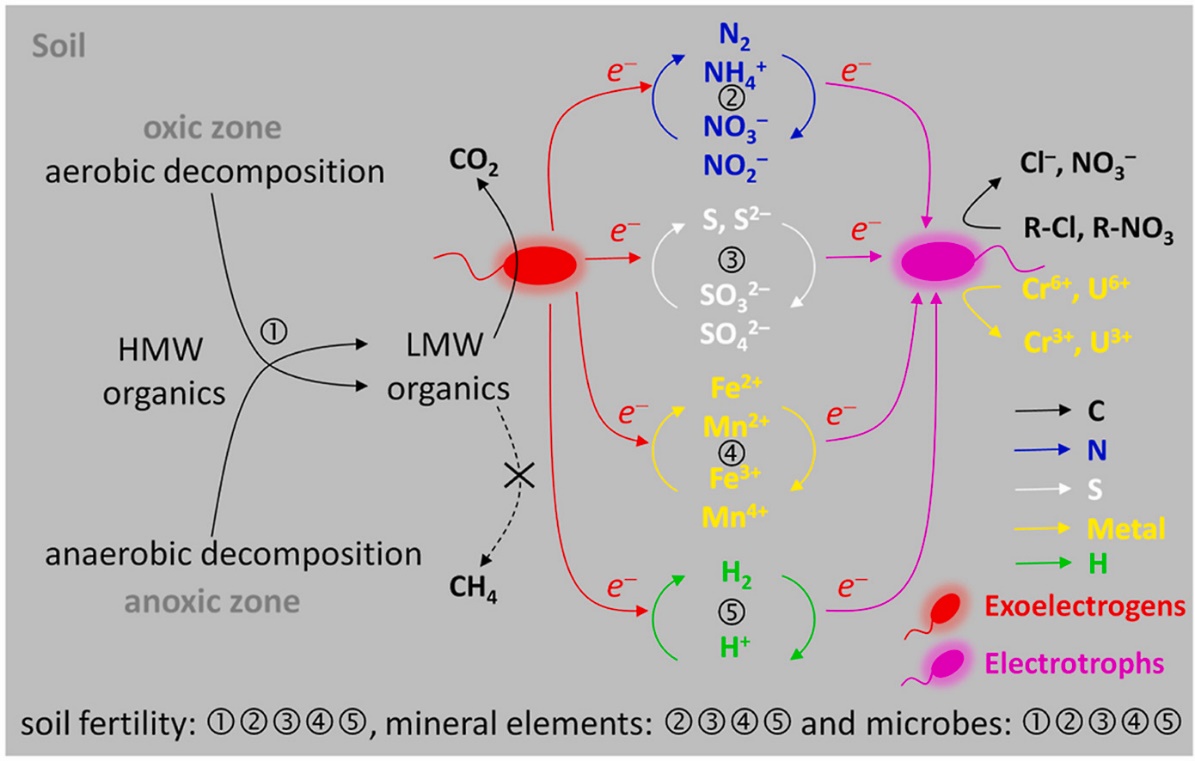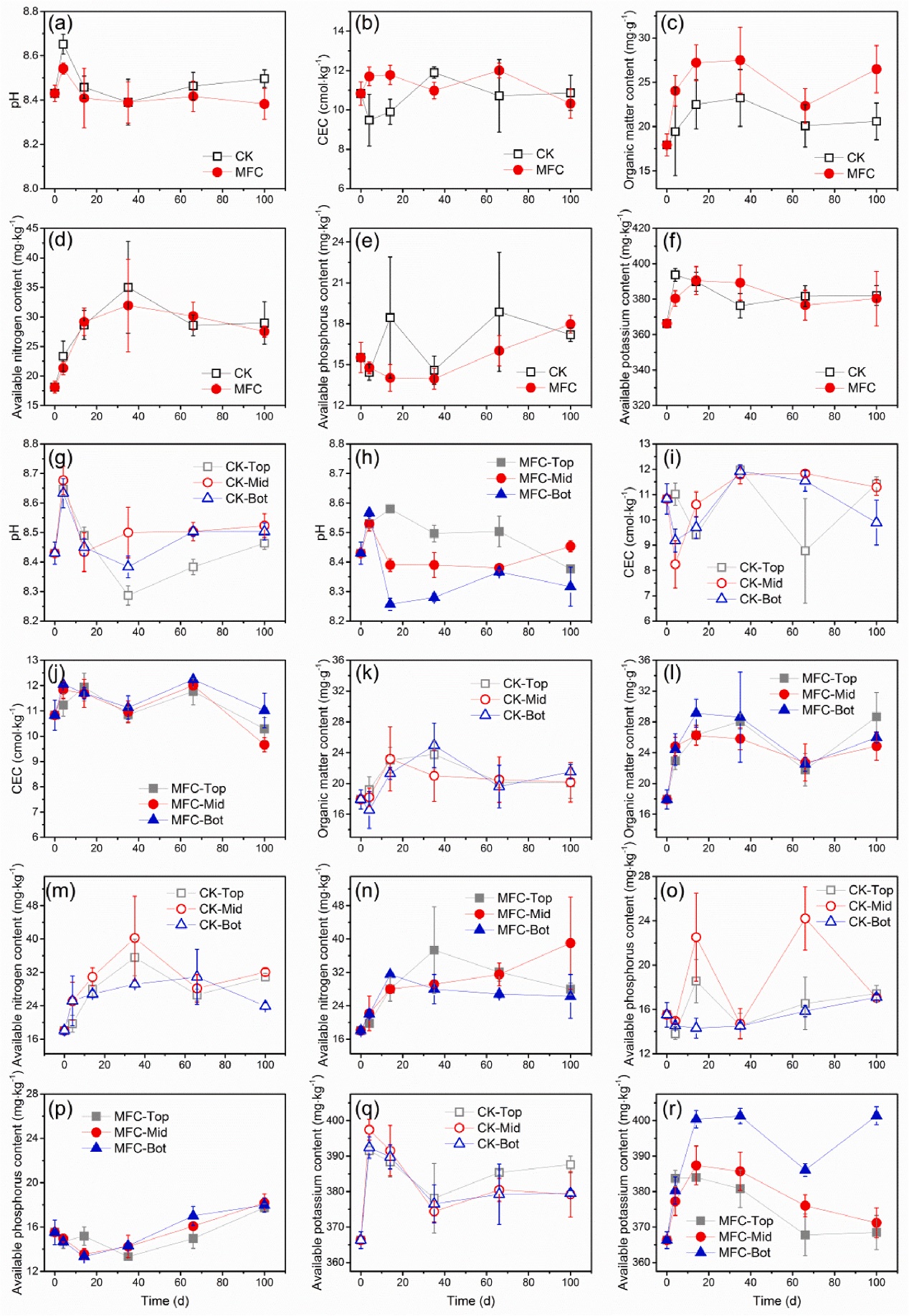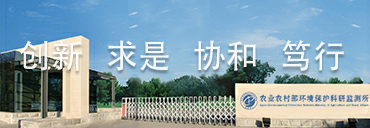Chemosphere:“轮回”的生物电流对土壤质量的影响如何?
作者: 来源:农田有机污染生物消减创新团队 2022-10-21
Chemosphere:“轮回”的生物电流对土壤质量的影响如何?

农业农村部环境保护科研监测所农田有机污染生物消减创新团队在Chemosphere杂志发表题为"Influence of biocurrent self-generated by indigenous microorganisms on soil quality"的研究论文。
农业农村部环境保护科研监测所硕士研究生韩婷为论文第一作者,李晓晶研究员为通讯作者。本研究得到了国家自然科学基金(41977133和41601536)、天津市自然科学基金(20JCYBJC01590)、农业农村部环境保护科研监测所基础前沿任务和创新工程所级重点项目资助。
doi: 10.1016/j.chemosphere.2022.135864
Highlights
The effect of soil biocurrent on the self-quality was assessed firstly.
The soil organic matter increased by 11-29% by the biocurrent stimulation.
The Ca content decreased by 90% while the Fe content increased by 103%.
Microbial community and functions were restored with the biocurrent gone.
Action mechanism and potential application of biocurrent were summarized.
Abstract
The redox process driven by anaerobic respiration is a link between matter conversion and energy exchange in soil biogeochemistry. Microbial extracellular electron transfer forming biocurrents is a force in element cycling and community living in soil. However, the effect of indigenous microorganisms generating biocurrents on soil quality is unclear. We found that soil biocurrent showed little adverse influence on soil pH, cation exchange capacity, and available nitrogen, phosphorus and potassium and deblocked sequestered organic matter (29%). In addition, the bioelectric field derived from biocurrent obviously forced the migration of mineral elements, which was a supplement to the theory of water-salt transport, providing a new perspective on element transport. Moreover, the soil biocurrent directly regulated the availability of Ca and Fe (increase of 7-fold), indicating that electron transfer plays an important role in weathering and mineralization and thus pedogenesis. From a microbial ecology point of view, the soil bacterial richness and diversity were perfectly restored to their original state when the biocurrent stopped; including bacterial functions; although a temporary enrichment of certain species was observed. The above results provide new insights into the interactions between electron transfer and soil quality and confirm the safety of soil bioelectrochemical technology.
Graphical abstract

厌氧呼吸驱动的氧化还原过程是土壤生物地球化学中物质转化和能量交换的纽带。微生物胞外电子传递形成的生物电流影响着土壤中元素的循环和微生物群落的演替,然而土著微生物自产生的生物电流对土壤质量的影响尚不清楚。本研究以农田土为基质,刺激土著电活性微生物在土壤微生物电化学系统(MES)中形成生物电流,从时间和空间上评估了土壤质量变化,包括pH、阳离子交换量(CEC)、有机质、速效氮(N)、速效磷(P)、电导率(EC)、矿质元素(Mg、Al、Ca、Cr、Mn、Fe、Ni、和Zn)以及微生物群落结构、多样性和功能。研究发现,土壤生物电流对土壤pH值、阳离子交换量、速效氮、速效磷、速效钾和有机质含量影响较小(图1)。此外,伴随土壤生物电流产生的生物电场明显促进了矿质元素迁移,这是对水盐运输理论的补充,为元素迁移提供了新的视角(图2)。并且,生物电流直接调节了Ca和Fe的可用性(增加了7倍),表明电子传递可能在风化和矿化中起着重要作用,从而影响成土过程。当生物电化学修复结束,生物电流停止时,土壤细菌群落丰富度和多样性几乎恢复到初始水平(图3)。总体而言,原位生物电流对土壤质量没有过度不利影响。以上发现为电子传递与土壤质量的相互作用提供了新的见解,并证实了土壤微生物电化学技术的安全性。

图1 土壤肥力。MFC和CK处理组:(a)、(g)和(h):土壤pH;(b)、(i)和(j):CEC;(c)、(k)和(l):有机质含量;(d)、(m)和(n):速效氮含量;(e)、(o)和(p):速效磷含量;(f)、(q)和(r):速效钾含量。

图2 MFC和CK处理组的土壤EC和矿质元素含量。(a-d):土壤EC和(e-h)土壤矿质元素含量。

图3 MFC和CK处理组土壤微生物群落的α多样性指数。(a)观察到物种数,(b)香农指数,(c)辛普森指数,(d)Chao1指数和(e)ACE指数













